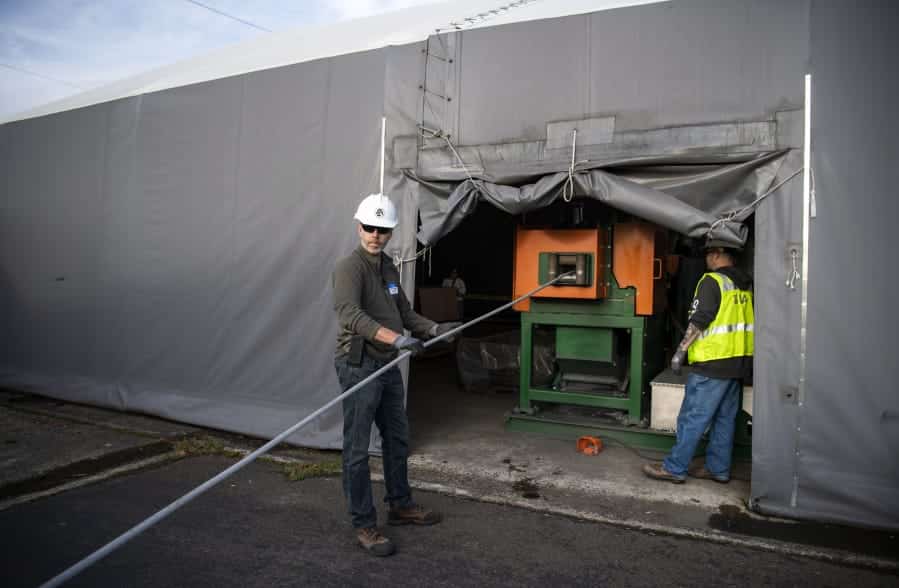Bonneville Power Administration Chops its Way to Recycling Savings
As seen in The Columbian newspaper
By Jeffrey Mize, Columbian staff reporter
Published: November 15, 2019, 6:00am

With nearly 15,000 miles of high-capacity transmission lines, the Bonneville Power Administration goes through a lot of material.
The agency uses aluminum cable, selected for its electrical conductivity and low cost and weight, with center steel strands for additional strength to better support the line between transmission towers.
That left BPA with a problem: What to do with used aluminum cable when transmission lines were replaced or upgraded?
Since March 2018, BPA has used a machine at its Ross Complex in Vancouver to separate the steel so aluminum can be sent directly to foundries for reuse. That has generated 30 to 40 percent more revenue than what BPA used to receive for combined aluminum-steel cable.
The machine, which agency officials call “the chopper,” has not only netted big savings but also has contributed to BPA receiving accolades from the U.S. Environmental Protection Agency for sustainability.
Kevin Kertzman, property disposal officer at the Ross Complex, declined to say how much BPA paid for the chopper. He did say, however, his agency quickly recouped its investment, in part because it had a large recycling project waiting and prices for aluminum were high.
“We hit the market perfectly,” Kertzman said after he and other BPA officials gave a tour of the recycling facilities Thursday afternoon. “It paid for itself twice in three months.”
In 18 months of use, BPA received nearly $700,000 from selling 375 tons of chopped aluminum, at an average of 93 cents a pound. That’s a lot of aluminum, considering that New York’s Statue of Liberty weighs 225 tons.
What goes on inside the chopper isn’t visible. Used transmission cable is fed into one end of the machine. Pieces of aluminum resembling nails spill out the other, while similarly sized scraps of steel tumble out the side. Kertzman said the device uses a fly wheel and two sets of blades to break apart the steel-reinforced aluminum cable and separate it into different containers for reuse.
“This is a mobile chopper,” he said. “It can go anywhere.”
Whether the chopper is brought to the material or vice versa depends on the volume of material, the distance and other considerations.
“For small jobs, it doesn’t make sense,” Kertzman said about transporting the device from the Ross Complex. “We can piggyback (the used cable) on other loads coming back.”
Kertzman said he learned about the chopper by visiting Salt River Project, an Arizona-based utility that used the machine manufactured by Sweed Machinery of Gold Hill in southern Oregon.
“I went all the way to Phoenix to find out these guys were 200 miles from our facility,” he said.
The chopper is one piece of a much larger recycling program at the Ross Complex that also includes recycling transmission power parts, auctioning off used equipment, recycling components from computers and other electronic waste, and finding places to donate used furniture and even mounds of three-ring binders.
“For the past several years, we’ve had a recovery rate of over 90 percent,” said Molly Hatfield, BPA’s sustainability program manager.
BPA says its recycling program saved Northwest ratepayers nearly $3 million in 2018 and will save even more this year.
In recognition for its recycling program, the Environmental Protection Agency presented BPA with a Federal Green Challenge Award for electronics and waste in 2019.
Demonstration of a mobile ACSR separation system.

